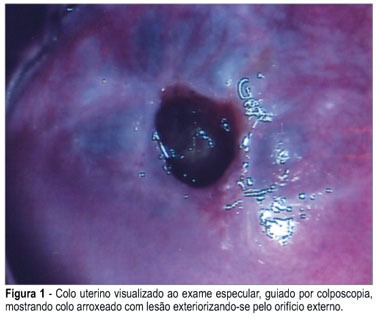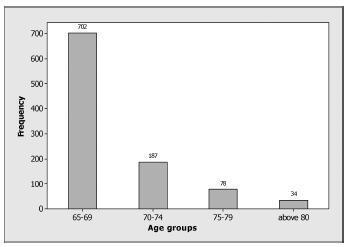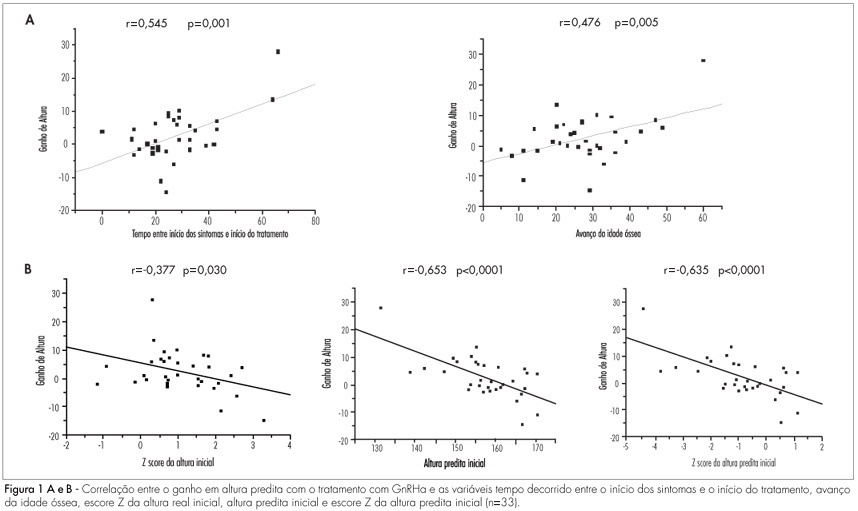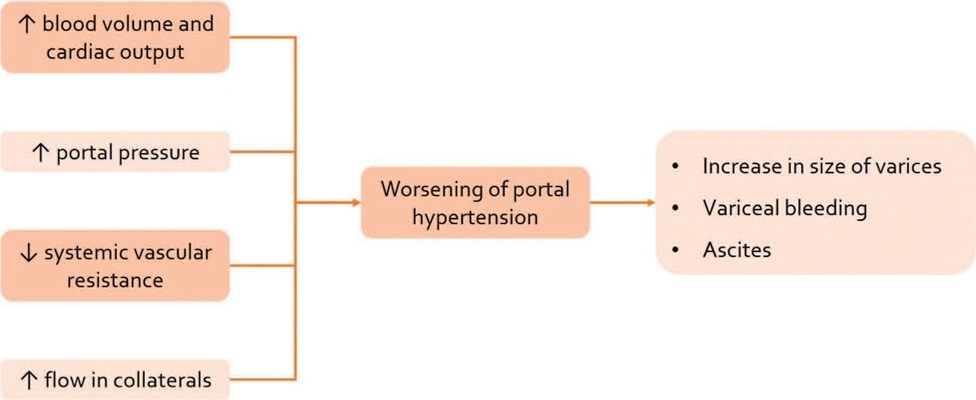Summary
Revista Brasileira de Ginecologia e Obstetrícia. 2005;27(10):607-612
DOI 10.1590/S0100-72032005001000007
PURPOSE: to test the hypothesis that gene TP53 codon 72 polymorphism is a risk factor for premalignant and malignant cervical lesions associated or not with human papillomavirus (HPV). METHODS: uterine cervical samples were collected for HPV DNA and TP53 codon 72 polymorphism tests from 155 patients who underwent cervical biopsy. Three groups were formed according to histological diagnosis: low-grade squamous intraepithelial lesion (LSIL), high-grade squamous intraepithelial lesion (HSIL) and cervical carcinoma. Subjects without cytological and histological displasic changes were considered controls. To verify the association between the gene TP53 codon 72 polymorphism and the groups, the chi2 test was applied. Confidence interval was considered significant at 95% (alpha=0.05). RESULTS: forty subjects were found to present cervical carcinoma, 18 had HSIL, 24 had LSIL and 73 were grouped as controls. The genotype Arg/Arg p53 was found in 60% of the patients with cancer, in 50.0% of the cases with HSIL, 45.8% with LSIL, and in 45.2% of the controls. No significant differences were identified in the frequencies of p53 genotype between all groups, independently of the presence of HPV (chi2: 3.7; p=0.716). CONCLUSIONS: our data do not support hypothesis that the gene TP53 codon 72 polymorphism is important for the development of pre-malignant and malignant cervical lesions associated or not with HPV.
Summary
Revista Brasileira de Ginecologia e Obstetrícia. 2006;28(10):607-611
DOI 10.1590/S0100-72032006001000007
Cervical pregnancy is a rare condition in which the egg is implanted in the cervical canal causing it to distend as the egg grows. Cervical pregnancy constitutes less than 1% of all ectopic pregnancies. Painless hemorrhage is a habitual clinical characteristic and on physical examination a very vascularized hypertrophic cervix is observed with a tissue surpassing the external orifice. Ultrasonography may be used as a complementary diagnostic tool to show directly the presence of a gestational sac. A successful management of a viable seven-week gestation cervical pregnancy is reported herein. Feticide was performed with a single intraamniotic methotrexate injection (25 mg) guided by transvaginal ultrasonography. Systemic methotrexate in a single dose intramuscular (50 mg/m²) was associated. The conservative management of cervical ectopic pregnancy with methotrexate was effective and safe.

Summary
Revista Brasileira de Ginecologia e Obstetrícia. 2021;43(8):608-615
To establish a relationship between serum progesterone values on the day of frozen blastocyst transfer in hormone-replaced cycles with the probability of pregnancy, miscarriage or delivery.
This was an ambispective observational study including all frozen-thawed embryo transfer cycles performed at our department following in vitro fecundation from May 2018 to June 2019. The outcomes evaluated were β human chorionic gonadotropin (β-hCG)-positive pregnancy and delivery. Groups were compared according to the level of serum progesterone on the day of embryo transfer: the 1st quartile of progesterone was compared against the other quartiles and then the 2nd and 3rd quartiles against the 4th quartile.
A total of 140 transfers were included in the analysis: 87 with β-HCG>10 IU/L (62%), of which 50 (36%) delivered and 37 had a miscarriage (42%).Women with lower progesterone levels (< 10.7ng/mL) had a trend toward higher β-HCG-positive (72 versus 59%; p>0.05), lower delivery (26 versus 39%; p>0.05) and higher miscarriage rates (64 versus 33%; p<0.01). Comparing the middle quartiles (P25-50) with those above percentiles 75, the rate of pregnancy was similar (60 versus 57%; p>0.05), although there was a trend toward a higher number of deliveries (43 versus 31%; p>0.05) and a lower number of miscarriages (28 versus 45%; p>0.05). These differences were not statistically significant.
There were no differences in pregnancy and delivery rates related with the progesterone level when measured in the transfer day. The miscarriage rate was higher in the 1st quartile group.
Summary
Revista Brasileira de Ginecologia e Obstetrícia. 2017;39(11):608-613
The aim of this study was to evaluate the health aspects of Brazilian women older than 65 years of age.
This was a retrospective study that included 1,001 Brazilian women cared for in the gynecological geriatric outpatient office of our institution. We report a crosssectional analysis of female adults aged over 65 years, including data on demographics, clinical symptoms such as vasomotor symptoms, associated morbidities, physical examination and sexual intercourse. We used the chi-squared test to assess the data.
The age of the patients on their first clinic visit ranged from65 to 98 years, with a mean age of 68.56 ± 4.47 years; their mean age at the time of natural menopause was 48.76 ± 5.07 years. The most frequent clinical symptoms reported during the analyzed period were hot flashes (n = 188), followed by arthropathy, asthenia, and dry vagina. The most frequent associated morbidities after 65 years of age were systemic arterial hypertension, gastrointestinal disturbance, diabetes mellitus, and depression, among others. The assessment of the bodymass index (BMI) found decreases inBMIwith increased age. At the time of the visit, 78 patients reported sexual intercourse. The majority of women reporting sexual intercourse (89.75%, n = 70) were between 65 and 69 years of age, 8.97% (n = 7) were between 70 and 74 years of age, and only 1.28% (n = 1) of those were aged older than 75 years.
Our findings suggested that vasomotor symptoms can persist after 65 years of age. There was a significant decrease in sexual intercourse with increased age. The cardiovascular disturbances in our study are health concerns in these women.

Summary
Revista Brasileira de Ginecologia e Obstetrícia. 2007;29(12):608-613
DOI 10.1590/S0100-72032007001200002
PURPOSE: to assess the accuracy (rate of correct predictions) of stereotactic core needle biopsy (CNB) of risk category BI-RADS® 4 breast lesions. METHODS: a retrospective analysis of category BI-RADS® 4 breast lesions that had been submitted to a stereotactic core-needle biopsy from June 1998 to June 2003. Patients with histological benign results consistent with the radiographic image were referred to mammographic follow-up. Patients with malign diagnosis and papillary lesions were submitted to standard specific treatment. Excisional biopsies were performed when results were benign, but in disagreement with the mammographic image. It was considered as a gold-standard attendance: (1) the mammographic follow-up of low suspicion lesions with benign results at CNB, which stayed unchanged for, at least, three years, and (2) surgical resection when specimen results were malign or benign, but with a high suspicion on mammography. Sensitivity (S) specificity (E) and overall accuracy of stereotactic CNB were statistically analyzed. RESULTS: among the 118 non-palpable lesions of category BI-RADS® 4 submitted to CNB, the results obtained were: 27 malign cases, 81 benign, and ten lesions with atypical or papillary lesions. The statistical analysis comprised 108 patients (atypical and papillary lesions were excluded). CNB sensitivity was 87.1% and specificity 100%. The positive predictive value was 100% and the negative, 95.1%. False negatives occurred in 3.7% (4/108) of cases. The prevalence of malign diagnostics in the BI-RADS® 4 lesions of this sample was 29.7 (31/118).The accuracy of this method in this casuistic was 96.3%. CONCLUSIONS: these results support stereotactic CNB as an extremely reliable alternative to open biopsy, in the diagnosis and definition of breast lesions. In positive results, it is possible to indicate the appropriate therapy, and, in negative (when mammography shows low suspicion), it allows a follow up.

Summary
Revista Brasileira de Ginecologia e Obstetrícia. 2008;30(12):609-613
DOI 10.1590/S0100-72032008001200004
PURPOSE: to evaluate predictive factors of response to GnRHa treatment in girls with idiopathic central precocious puberty. METHODS: a retrospective cohort study was conducted involving 33 girls diagnosed with idiopathic central precocious puberty and treated with GnRHa. The following independent variables were assessed: age at the beginning of therapy and at the onset of symptoms, time elapsed since the appearance of pubertal characteristics and the beginning of treatment, bone age, bone age advance, duration of GnRHa treatment, actual height and Z-score, predicted height and Z-score and hormone measurements of FSH and LH after GnRH stimulation, which were correlated with gain in height as a dependent variable at treatment discontinuation, calculated by the difference between the predicted height at the end and beginning of treatment. For statistical analysis, Pearson's linear correlation was used, in addition to multiple linear regression analysis. RESULTS: the mean age at the beginning of treatment was 7.8±1.3 years, with a mean bone age of 10.1±1.6 years. Bone age advance was 2.3±1.1 years and was controlled during the treatment period. Gain in predicted height was 2.5±1.3cm. It was positively correlated with time elapsed since the beginning of symptoms and the beginning of treatment and with bone age advance, while negatively correlated with the Z-score of height at the beginning of treatment and predicted height at the beginning of treatment, and the latter was the main factor determining gain from treatment. CONCLUSIONS: girls who had the most significant compromise of predicted adult height, as detected by a larger deviation from the population (Z-score) and the most considerable advance in bone age, received benefit from GnRHa therapy, and they must not be excluded from the group to be treated.

Summary
Revista Brasileira de Ginecologia e Obstetrícia. 2022;44(6):609-613
Pregnancy in non-cirrhotic portal hypertension (NCPH) is an uncommon condition. Its management is challenging both to the obstetricians as well as to the gastroenterologists due to the lack of more extensive studies and standard clinical practice guidelines. These patients are at increased risk of portal hypertension (PTH) complications, especially variceal bleeding, and with an increased incidence of adverse maternal and fetal outcomes. Hence, a multidisciplinary approach is required for management of pregnancy in NCPH. This short review describes the different aspects of pregnancy with NCPH, emphasizing specific strategies for preventing and managing PTH from the preconceptional period to postpartum.
